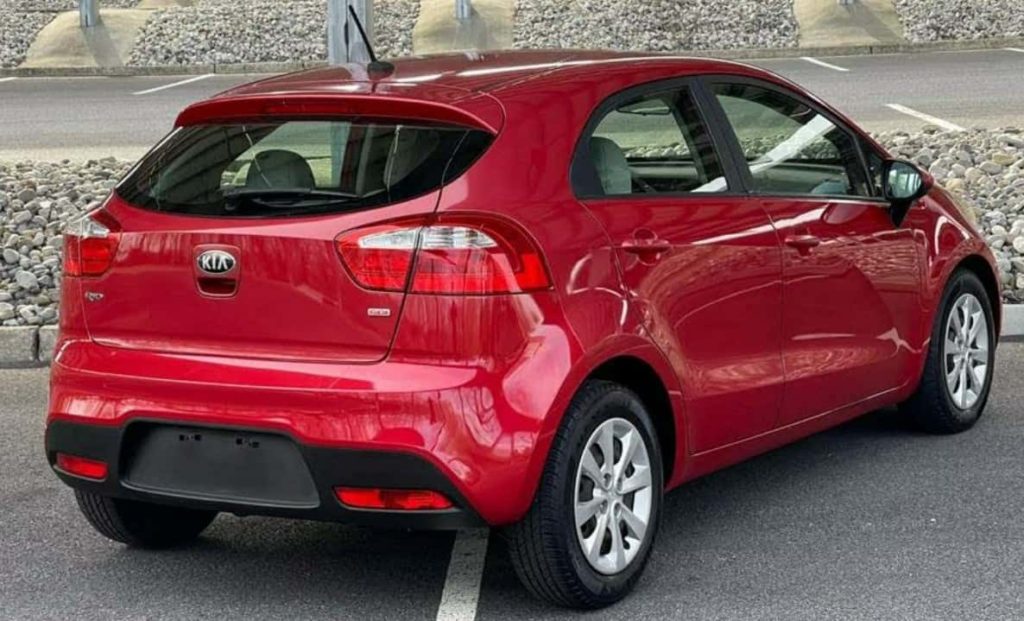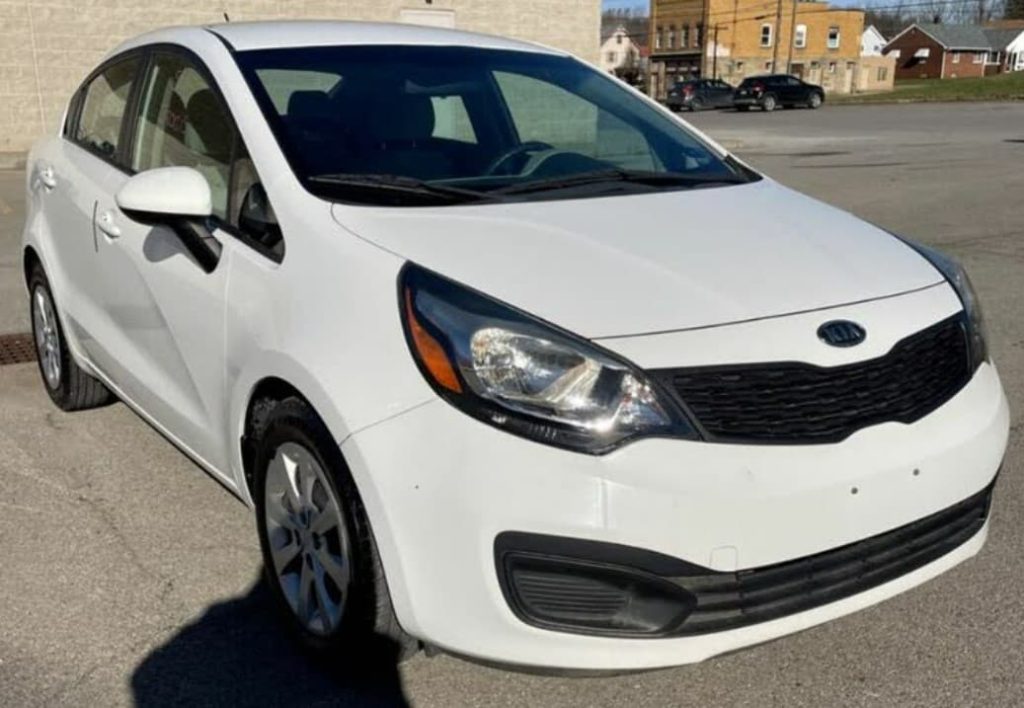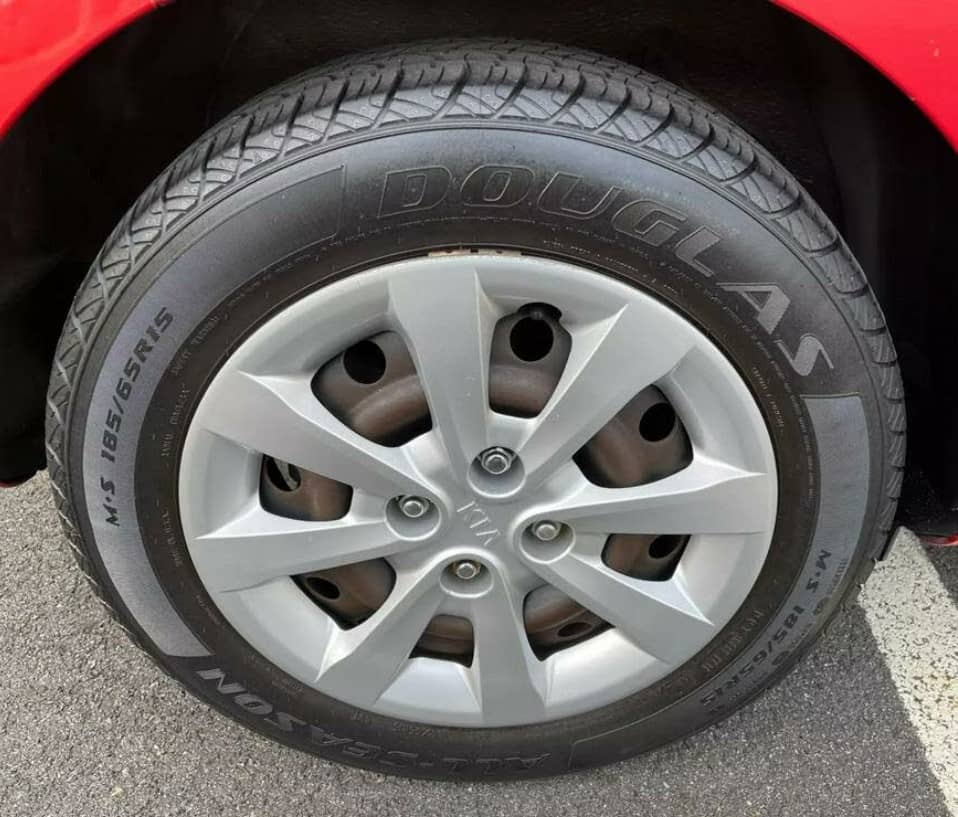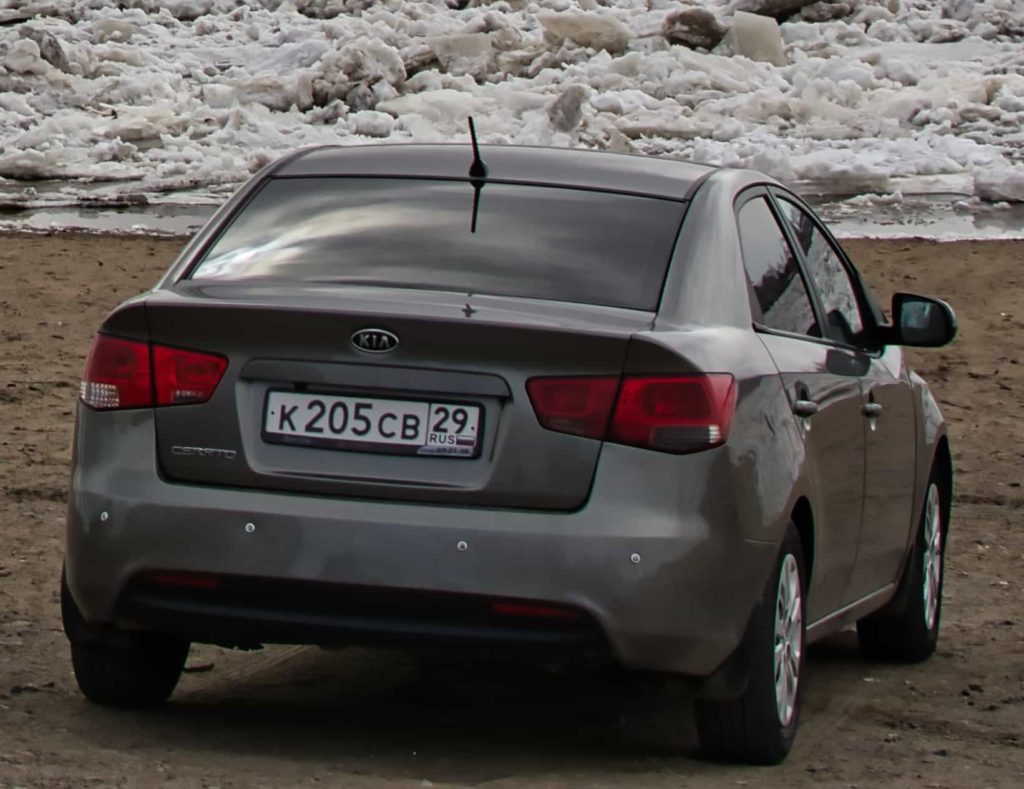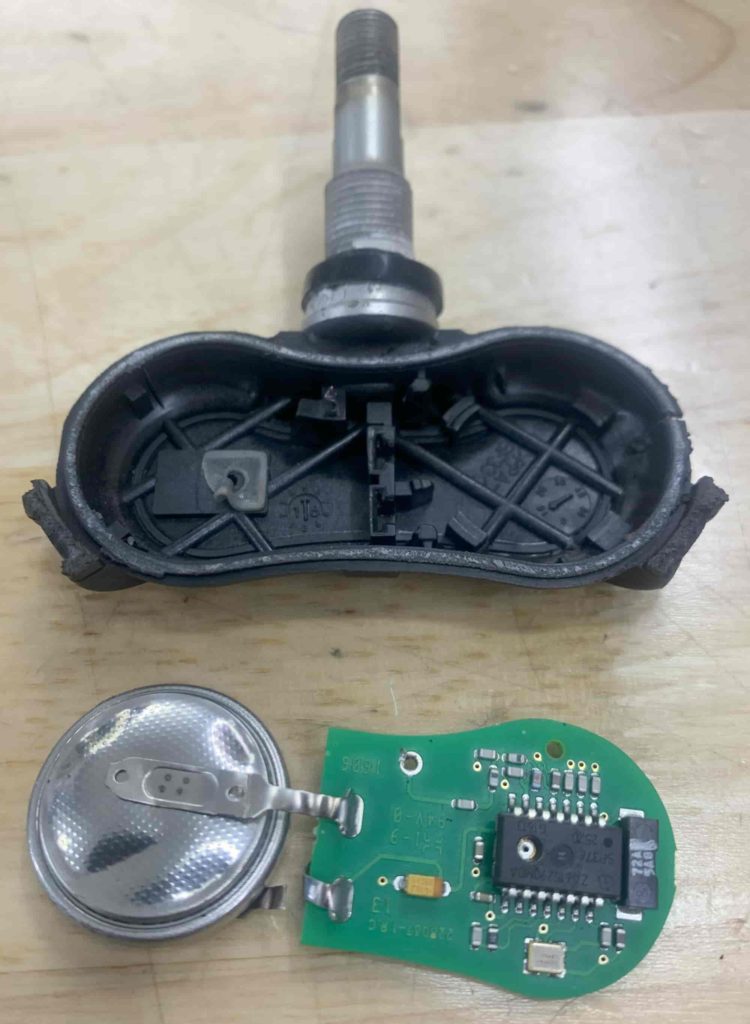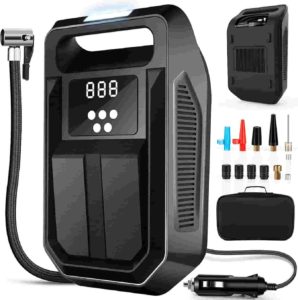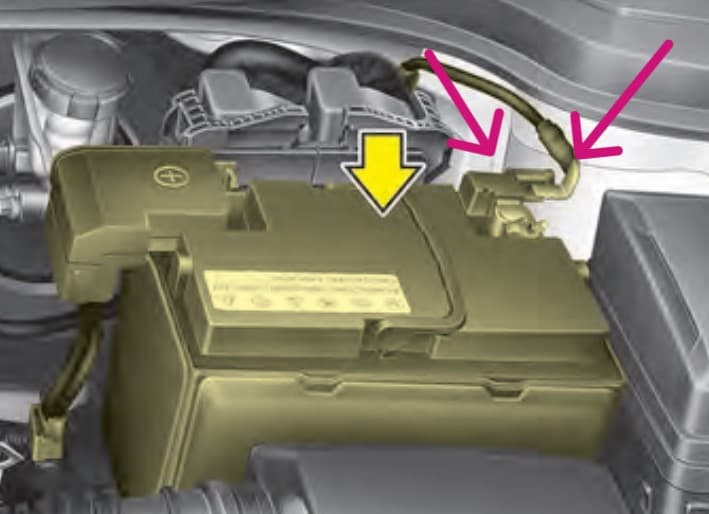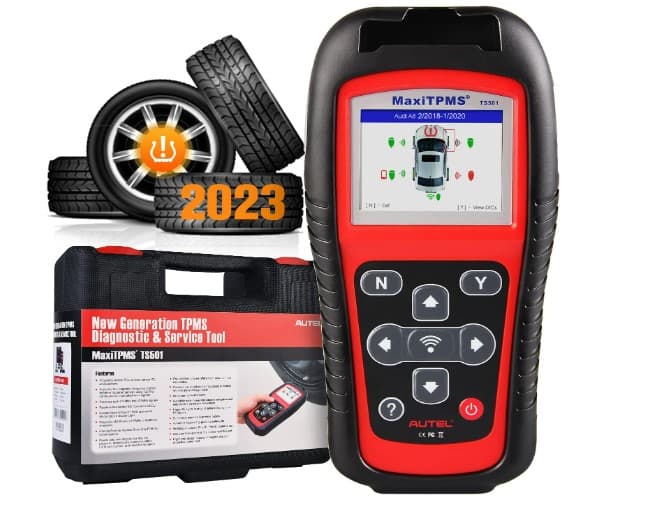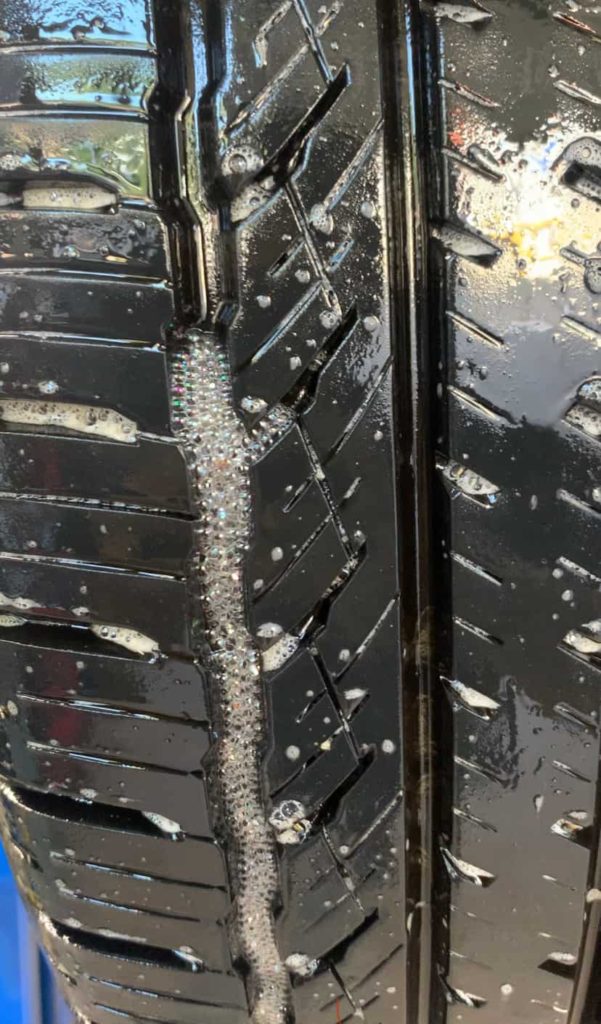What is the Kia Rio Tire Pressure Monitoring System?
The tire pressure monitoring system (TPMS) in the Kia Rio is a valuable safety feature. It’s a smart piece of technology that continuously measures the air pressure in your car’s tires. If the pressure drops below a safe level, it lets you know through a warning light on your dashboard.
Kia Rio Tire Pressure Light Reset Procedure
The Kia Rio does not have a tire pressure reset button.
When the tire pressure light on the dashboard lights up, pull over and check your tire pressure right away.
Check all 4 tires pressure levels and adjust the tire pressure accordingly.
Fill the tires to the exact recommended pressures.
Drive your Kia Rio for a few miles at speeds over 20 Mph.
If the light doesn’t go off right away, re-check your tire pressure to make sure they are all at the exact pressure you set them to. If they are down in pressure again, you have a tire losing air.
How Does the Kia Rio TPMS work?
Sensors: The Kia Rio’s tire pressure system has sensors mounted on the end of each valve stem to measure air pressure and temperature of each tire.
Wireless data transmission: The sensors wirelessly transmit the tire pressure data to the car’s TPMS control unit and ECU/ECM using radio frequencies.
Continuous monitoring: The TPMS control unit continually analyzes and measures the tire pressure data received from the sensors.
Pressure comparison: The system compares the measured tire pressure against the recommended levels set by Kia for the Rio.
Warning activation: If the measured tire pressure is below the recommended levels, the TPMS triggers a warning.
Dashboard display: The TPMS warning light appears on the dashboard LCD with a yellow exclamation point.
Tire identification: The Kia Rio’s tire pressure system indicates which specific tire is experiencing a pressure issue.
Regular monitoring: The TPMS continuously monitors and measures your tire pressure while driving.
Why is the Tire Pressure Light On?
Air Temperature changes: A decline in the surrounding temperature may lead to a reduction in tire pressure.
Tire puncture or leak: A sharp object like a nail or screw can penetrate a tire, leading to substantial air loss.
Faulty tire pressure sensor: Damaged or malfunctioning sensors may provide inaccurate or incorrect readings.
Valve stem issues: Rubber valve stems can crack and leak and metal valve stems use rubber seals that can dry rot and leak over time.
Tire damage: Driving over potholes or colliding with a curb may result in structural issues such as tire bubbles, which in turn can lead to a loss of pressure.
Recent tire rotation or replacement: After rotating the tires the car’s computer might get confused, thinking the front tires are in the back and the back tires are in the front.
Wheel or rim issues: Cracked or damaged wheels may lead to air leaks and air pressure loss.
New Wheel or Rims: If you replace a wheel or rim and don’t swap over the old tire pressure sensor to the new wheel or rim, your tire light will flash and then stay on permanently.
Spare Tire: There is no tire pressure sensor in the Kia Rio spare tire so this will cause a TPMS malfunction when driving with the spare on the car.
Altitude changes: Going up or down in elevation can affect tire pressure and cause the Tire Pressure Monitoring System (TPMS) warning to activate.
Natural pressure loss: Air pressure in tires decreases gradually because of temperature fluctuations and permeation. If tires are left sitting for extended periods of time they may develop dry rot.
Understanding Tires
What are the Effects of Underinflated Tires?
Underinflated tires on a Kia Rio can lead to several issues, including:
Decreased Fuel Efficiency: Less air in your tires means more surface area contacts the road. This increases resistance and friction which will require more fuel to move the car.
Poor Handling: Underinflated Kia Rio tires may respond more slowly to steering, making the car harder to handle and possibly affecting safety.
Increased Tire Wear: Tires that are underinflated wear out more quickly, particularly on the edges and can lead to a need for more frequent replacements.
Reduced Comfort: A smoother ride is compromised with underinflated tires, as they might not absorb road imperfections as effectively.
Potential Tire Failure: If left unchecked, underinflation can lead to a blowout or other tire failure, a serious safety concern.
How Does Weather Affect Tire Pressure?
Weather plays a significant role in influencing tire pressure. When the temperature drops, so does the air pressure in your tires. This happens because air contracts when it cools, which decreases the pressure. The opposite happens when it gets warmer, the air inside the tires expands which leads to increased tire pressure. For every 10-degree Fahrenheit change in temperature, your tire pressure changes in the same direction by 1-2 psi (pounds per square inch).
How to Check and Adjust Kia Rio Tire Pressure
Find the Recommended Pressure: Check the yellow/white label inside the driver’s side door to find the correct tire pressure for your Kia Rio. (or use the chart below)
Use a Tire Pressure Gauge: With the tires cold, unscrew the valve cap from the valve stem and press your tire pressure gauge onto the valve stem. The gauge will show the current pressure.
Compare with Recommended Pressure: Check if the measured pressure matches the recommended pressure. If it’s lower or higher you’ll need to adjust it.
Adjust the Pressure:
If it’s too low, use an air compressor to fill the tire to the correct pressure.
If it’s too high, press the metal stem in the center of the valve to release some air. You can use your finger or gently push the stem in with a tool. Check the pressure again to make sure it’s at the recommended level.
Replace the Valve Cap: Put the valve cap back on and make sure it’s tight.
Repeat for Other Tires: Follow the same steps for each tire.
2023 Kia Rio Tire Pressure & Wheel Size
Tire Size | FRONT PSI | REAR PSI |
185/65R15 | 34 | 31 |
195/55R16 | 34 | 31 |
205/45R17 | 35 | 38 |
SPARE TIRE | 60 | 60 |
Is it Safe to Drive the Kia Rio With the Tire Light On?
No it’s not safe to drive your Kia Rio with the tire light on, but if you’re going to drive with the light on you should know why the light is on before deeming it safe or not. To figure out how safe it is, you need to find out the cause of the tire light.
Kia Tire Pressure Sensor Batteries
The tire pressure sensors in the Kia Rio work independently and have a built-in battery, much like the ones in key fobs or watches. These batteries are sealed in small plastic containers and attached directly to the sensor’s electronics, so you can’t replace them. If a battery runs out or gets close to dying, you have to replace the whole sensor. Things like how often you drive, the weather conditions you drive in, and distances you drive can all affect how long the battery lasts. Generally these batteries can last between 5 to 10 years. (I have seen some batteries last just a few years all the way to 15 years)
Troubleshooting the Kia Rio Low tire Pressure Light
If you’re encountering problems with turning off or resetting the tire pressure light on your Kia Rio, here are a few actions you might consider:
Solution 1: Is There a Tire Losing Air?
The most probable cause for the tire light to activate in your Kia Rio is a drop in air pressure. If you refill the tire that’s low on pressure and the light turns off or resets only to come back on within minutes, hours, or days, this likely means there’s a leak in the tire or wheel. The solution: find the leak and fix it. (how to find a leak below)
Solution 2: Activate a Passive Sensor
If the tire light is on and you’re sure your tires aren’t losing air the sensor might just need to wake up/reactivate. First, figure out which tire is causing the light to come on. Next, let out about 20 Psi from that tire and then over inflate the tire. We suggest overinflating by about 10 Psi. So if the tire is supposed to have 34 Psi, inflate the tire to 44 Psi. (don’t worry this is just for a few minutes) With the tire overinflated take a short slow drive for a few miles avoiding busy roads and highways. After that, park your Kia Rio and set the tire pressure back to the recommended tire pressure.
Solution 3: Manually Erase the Kia Rio DTC's (diagnostic trouble codes)
If nothing else works and you’re sure your tires aren’t losing air, you can manually clear the error codes from your Kia Rio’s Electronic Control Unit (ECU). To do this, disconnect the negative terminal of your Rio’s 12-volt battery and leave it disconnected for a few minutes. Then, reconnect the terminal. This action will essentially wipe all the existing fault codes in the ECU, including the one making the tire pressure warning light come on. If the light turns off but then comes back on after doing this, it’s likely because of a faulty sensor or a leak in a tire.
Solution 4: Check the Status of Each Tire Pressure Sensor
If you suspect a faulty sensor or a low battery in one of your tire pressure sensors, you can use a TPMS diagnostic tool to check the status of each sensor. No matter which TPMS diagnostic tool you’re using (I recommend Autel), the procedure is generally the same across different models. To examine each sensor, position the TPMS tool right in front of the valve stem of each wheel and choose the “test” function on the tool. After testing all four pressure sensors the TPMS tool will generate a report detailing the current battery status of each sensor. If any sensor shows a “low” status or is in any way different from the other sensor’s stats, that particular sensor needs to be replaced.
Solution 5: Does the Tire Light Turn On and then Switch Off?
If the tire pressure light turns on or is on when you begin driving your Kia Rio but goes off after a few minutes of driving, it suggests that your tire pressure is slightly below the necessary level. This can happen when your tires are cold in the morning as the air temperature is low (low pressure) and then heat up as you drive. To fix this check and adjust your tire pressure when your tires are cold.
Why is the Tire Light Blinking?
Your Kia Rio also has a special warning light to alert you to potential issues with your tire pressure monitoring system (TPMS). This warning light displays a flashing yellow exclamation point on the dashboard. If there is a problem with the TPMS, the light will flash for about 60 seconds and then stay on. The Kia Rio computer system is letting you know that it cannot find one or more of your tire pressure sensors. This is why a TPMS malfunction occurs when driving the Kia Rio with the spare tire on (because the spare tire does not have a sensor in it). This means when your tire light is flashing or blinking, the system will not be able to detect low tire pressure. So, a blinking tire pressure light means there is an issue with the tire pressure monitoring system, not an air pressure issue.
Tire Leaks and Solutions
How to Find a Tire Leak in the Kia Rio
To find a tire leak in your Kia Rio start by checking the air pressure in all four tires to see which one is deflated. Inflate the tire that’s low on air to at least 35-40 Psi, as finding a leak in a completely flat tire might be difficult. Next, create a mixture of water and soap in a spray bottle. Generously spray this mixture over the tire, making sure to cover areas like the valve stem and bead seal. Once the entire tire is thoroughly wet, look for small bubbles forming on the tire’s surface. If there’s a leak, the air escaping will cause tiny bubbles to appear at the leak’s location. Remember: If the tire is losing air, there’s a leak somewhere and you can find it with this method.
Are Tire Plugs Safe?
Yes, I’ve personally used tire plugs on hundreds of tires and I’ve found them to be highly dependable. Tire plugs are made from strong rubber like materials and if installed correctly they can last for the life of the tire. It’s important to note that tire plugs should only be used on the tread of the tire.
Can I Disable the Kia Rio TPMS?
The brief answer is no. If you take out the tire pressure sensors from all the wheels, it will cause the tire pressure light to malfunction. This will lead to the light flashing initially and then remaining on permanently. Remember, although the low tire pressure warning light can be frustrating, the Kia Rio TPMS is a safety feature and exists for a good reason.
Everything in this article is applicable to all Kia Rio models and trims including the Kia Rio LX, S, and Rio 5-Door.
Please note that this blog post contains Amazon affiliate links. This means that if you make a purchase through one of these links, we at TPMSRESET.COM may earn a small commission at no extra cost to you. We only recommend products that we personally use and believe in. Thank you for supporting us.

